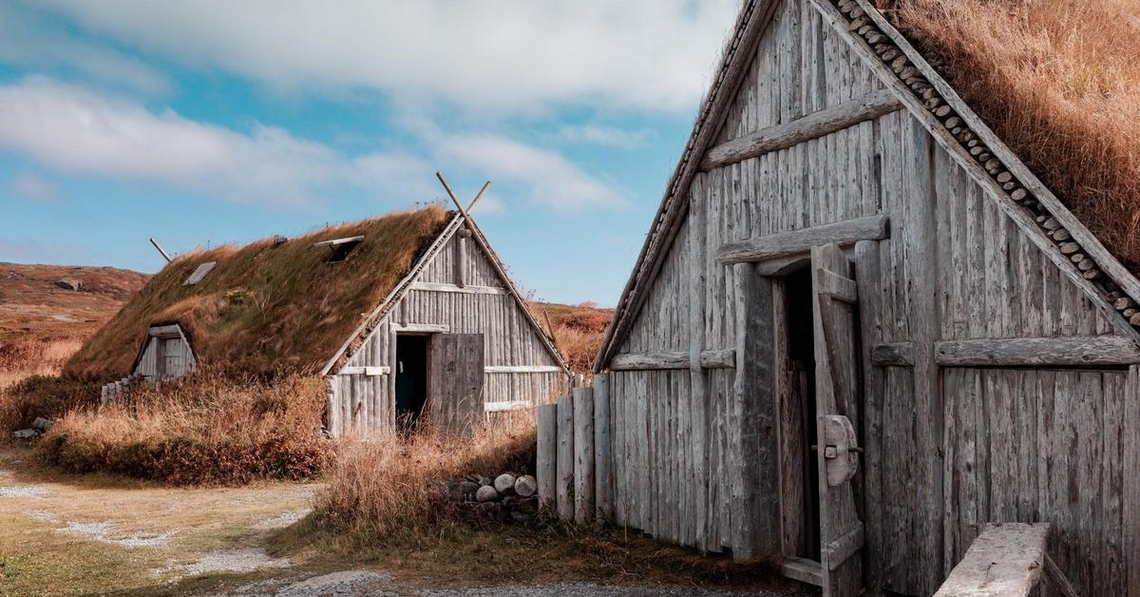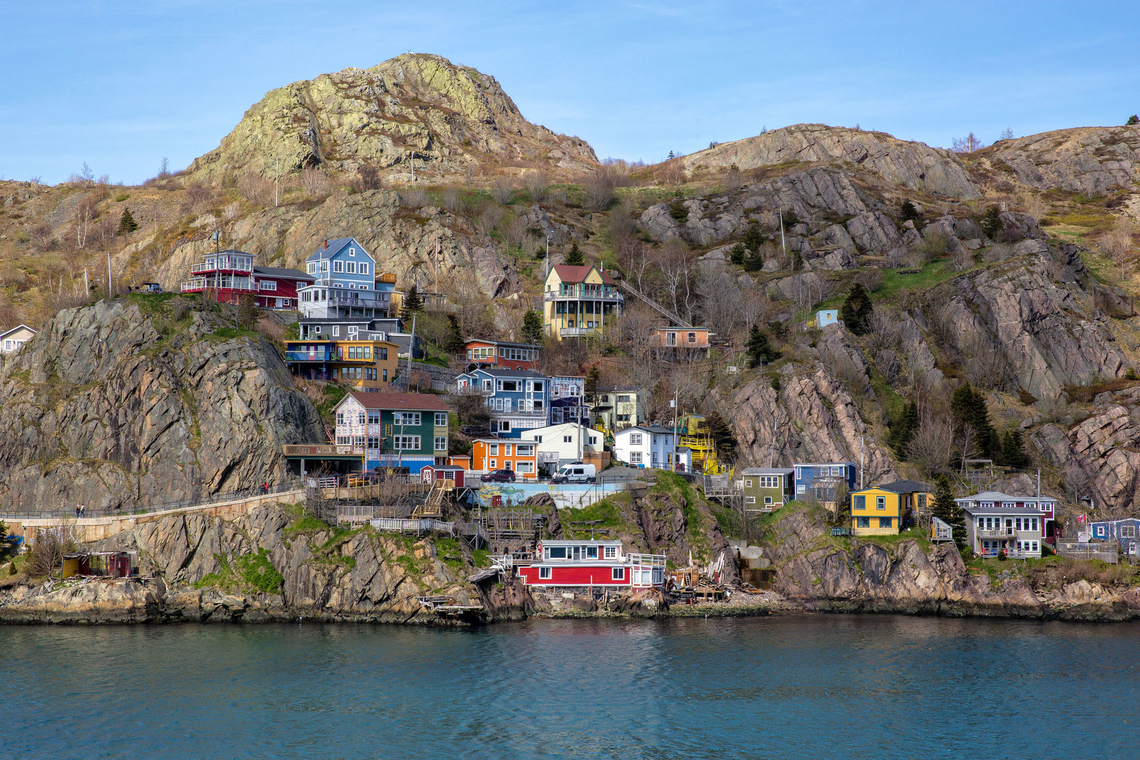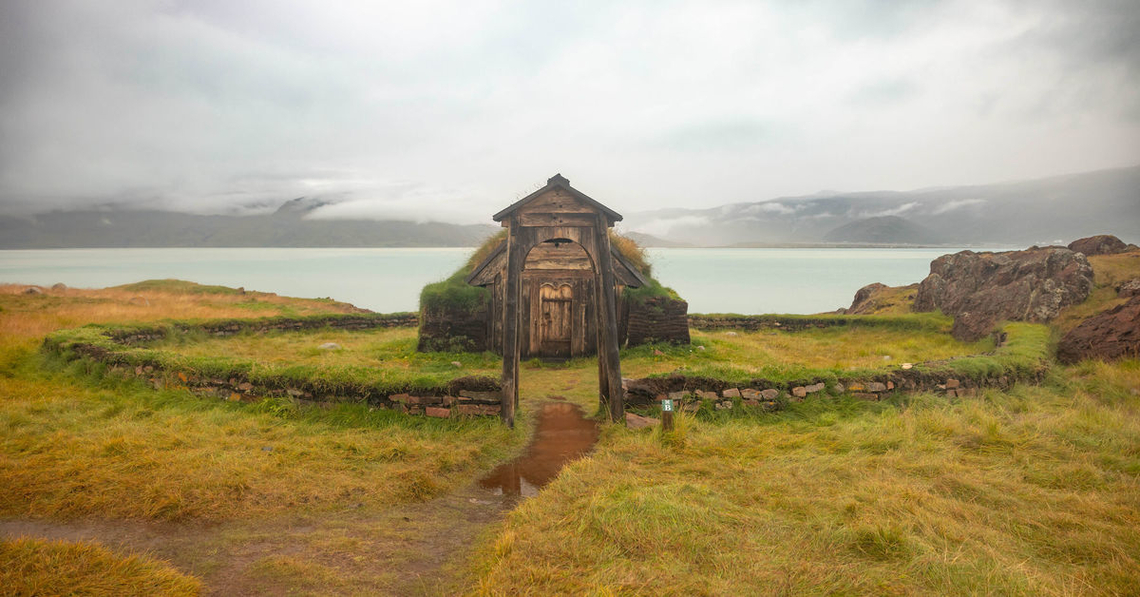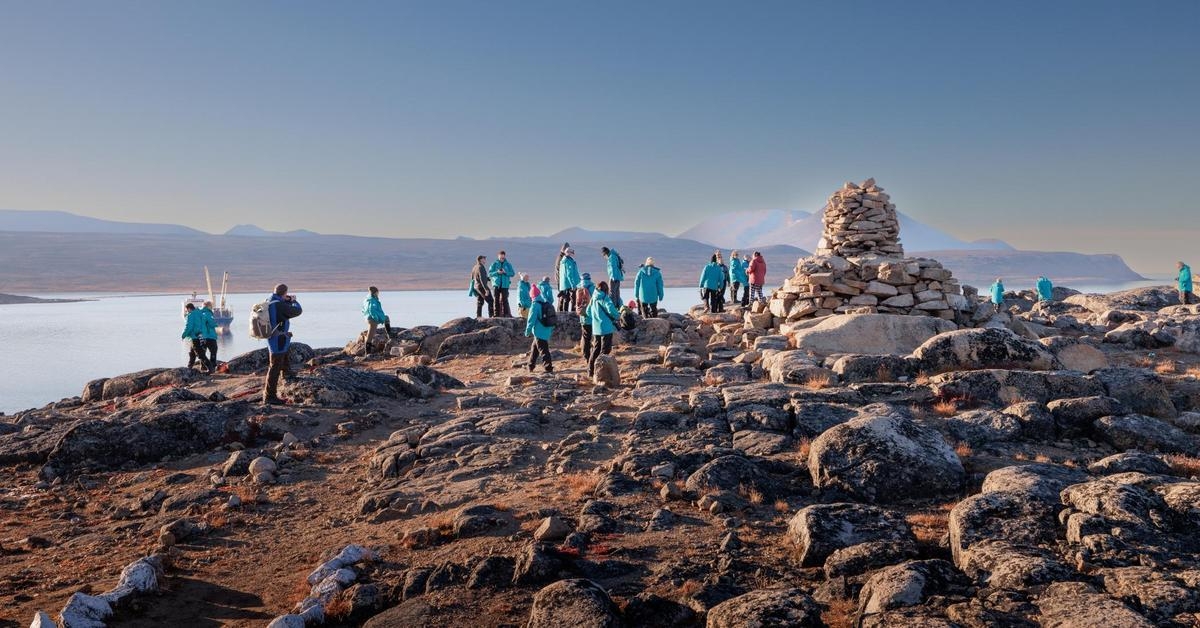Intriguing settlements, breathtaking wildlife, and the natural beauty of Newfoundland and Greenland await in a region rich in history, secrets and unforgettable experiences. Discover the remarkable history of Viking explorers, seafaring Norse people from Scandinavia who were active from the late 8th to early 11th century. Erik the Red (950–1003 AD) was a fiery-tempered Norwegian Viking, known for founding the first Norse settlement in Greenland. Leif Erikson (970–1020 AD) became the first European to set foot in North America around the year 1000 AD (nearly five centuries before Columbus). And Gudrid the Far-Traveled was a daring Icelandic Viking (985–1050 AD) – sometimes called "the greatest female explorer of all time"– who made eight Atlantic sea voyages and gave birth to the first European baby in North America. Ready to walk in the footsteps of Viking legends? Let's take a look at some of the historical highlights waiting for you…
North America’s Viking Legacy
Nestled on the rugged shores of Newfoundland’s Great Northern Peninsula, L’Anse aux Meadows stands as the only confirmed Viking settlement in North America. This UNESCO World Heritage Site was discovered in 1960, and features reconstructed Norse sod buildings, ironworking remains, and artifacts from around 1000 CE. Step back in time and explore where Vikings first set foot in the New World!

A hidden gem
St. Anthony, Newfoundland, is more than just a scenic coastal town – it’s a gateway to Viking history and Arctic mystery. While St. Anthony itself wasn't a Viking settlement, it lies just 30 km away from L’Anse aux Meadows and now serves as a major gateway for tourists visiting the spectacular Norse site. St. Anthony also appeals with its breathtaking coastal scenery, iceberg spotting along Iceberg Alley, thrilling whale watching, and its historic Grenfell Museum.
Tradition and history
Saint Pierre and Miquelon, a small French territory off the coast of Newfoundland, blend European charm with the North American wilderness. The main island, Saint Pierre, serves as the capital, with its Musée Héritage offering a fascinating glimpse into the region's past. Steeped in seafaring tradition, this region’s windswept coastal paths and subarctic meadows are the perfect place to spot local wildlife, including seals, dolphins, whales, and over 300 bird species.
St. John’s, North America’s easternmost city and capital of Newfoundland and Labrador, has a history shaped by exploration and fishing. From its colorful houses to Signal Hill’s historic battles, every corner tells a tale of resilience.

Back in time
Greenland's Viking settlements flourished in two key areas: the Eastern Settlement (Eystribyggð) and the Western Settlement (Vestribyggð). In the Eastern Settlement, now known as the Kujalleq region, Qassiarsuk stands out as the site of Viking explorer Erik the Red’s 10th-century estate, which was once Greenland's largest Viking settlement. Here, you can explore the ruins this Norse community, reconstructions of a Norse longhouse and Tjodhilde’s Church, believed to be the first Christian church in North America. This UNESCO-listed area blends Viking heritage with amazing landscapes, offering a unique glimpse into the past.
Gateway to South Greenland
Narsarsuaq is know as a hub for history, nature, and adventure. Once a WWII airbase, it’s now a vibrant destination for explorers. Discover the Greenland Arboretum, where wildflowers bloom beneath the midnight sun, spot Arctic wildlife, or hike to awe-inspiring panoramic viewpoints.
Unforgettable Viking heritage
South Greenland’s largest city, Qaqortoq, is a remarkable place to explore Norse ruins. The town’s UNESCO-listed Kujataa World Heritage Site celebrates Arctic farming culture spanning a 1,000 year timeline from the Viking era to present day. Discover 18th-century colonial buildings, Greenland's oldest fountain – depicting whales spouting water – and the Qaqortoq Museum, housed in the oldest building, highlighting early settlers' history.
Unmissable ruins Found near Qaqortoq, in the Kujalleq region, Hvalsey Church is Greenland's best-preserved Norse ruin. This mesmerizing historical site is famous for hosting the last recorded Viking event – a wedding in 1408. The atmospheric church's stone walls remain standing today, offering visitors the chance to witness the enduring legacy of the Vikings. Found in the same region, the village of Igaliku is thought to be one of the best-preserved Norse sites in Greenland. Once once the episcopal seat of Greenland, Igaliku is home to impressive ruins of a cathedral and several Norse farms.

Viking lives revealed
Found in the Western Settlement, near modern-day Nuuk, The Farm Beneath the Sand (also known as "Gården Under Sandet" in Danish) is a must-see Norse settlement site. Occupied between 1000 and 1400 CE, and discovered in the 1990s, this well-preserved site offers a remarkable glimpse into Viking daily life.
Island mysteries
Baffin Island, in the eastern Arctic, is home to several sites that hint at a potential Norse presence, particularly in Tanfield Valley and the Nanook site. Artifacts, such as stone tools, and architectural remains suggest Viking influence, though the extent of Norse activity here remains a mystery. Baffin Island’s wild landscape is also a haven for wildlife. Visitors may spot polar bears, Arctic foxes, and narwhals, making it a prime destination for history and nature enthusiasts alike.
Norse farming and crafts
Sandnæs, located at the site known as Kilaarsarfik today, was the largest Viking farm complex in the Western Settlement. Settled around 1000 and abandoned by the late 14th century, excavations reveal evidence of metalworking and various crafts, showcasing the settlers' skilled craftsmanship. Nestled in the Godthåbsfjord system, this historic site offers a glimpse into the resourceful lives of the Norse settlers in Greenland.
A voyage to remember
A great way to experience the amazing Viking trail is to join Swan Hellenic’s captivating voyage across this region – The Wonders of the North Atlantic: Canada to Iceland Cruise – set sail with us and you'll experience a fascinating insight into the region’s engaging history and natural beauty.
